Human Body Lesson Plan

Lesson Plan Mindmap for Human Body ” Click to Enlarge
CLICK ICONS TO JUMP DIRECTLY TO EACH SUBJECT ON THIS PAGE








HUMAN BODY LESSON PLAN
This page is a free-shared lesson plan archive for teaching all educational subjects within the context and theme of “The Human Body”. It is purposed for use in community education environments, homeschool environments, traditional schooling environments, or as a supplemental and fun addition to any education program. As part of the complete Education for Life Program, this lesson plan is specifically designed to work in conjunction with the other components: Foundations of Teaching, Curriculum, Teaching Strategies, Learning Tools and Toys, Evaluation Model, and The Ultimate Classroom. If you’d like to learn how all these components work together, click here. Click here for the specifics focused on just using the lesson plans:
CLICK HERE FOR A DETAILED TUTORIAL ON HOW TO USE THIS LESSON PLAN
NOTE: The colors are provided as a possible linear progression (red/easiest to violet/most challenging) for people that might prefer a more linear structure. Our core philosophy, however, is that through creativity every color can be made easy or challenging for any learning level.
RELATED PAGES (mouse-over for descriptions and click for complete pages)
EDUCATION OVERVIEW | HOW TO USE THIS COMPONENT | OUR OPEN SOURCE PURPOSE
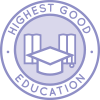
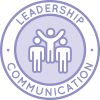
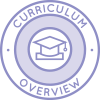
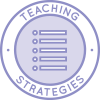
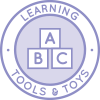
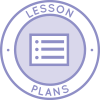
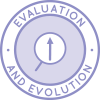
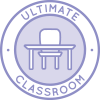
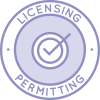

WAYS TO CONTRIBUTE TO EVOLVING THIS EDUCATION PROGRAM WITH US
SUGGESTIONS | CONSULTING | MEMBERSHIP | OTHER OPTIONS
A NOTE ABOUT ALL ONE COMMUNITY LESSON PLANS
The One Community lesson plans are intentionally designed for use in ANY educational environment and with ALL educational, cultural, religious/spiritual, and philosophical approaches to teaching and learning. They are designed without an ideological approach and specifically so they can be adapted to include the views, preferences, methodologies, and/or ideologies preferred by different parents and teachers.
For maximum flexibility and adaptation, they are also designed to be combined to teach multiple subjects at the same time. Doing this increases the creativity, effectiveness, and fun of your learning environment. Once we are on the property and operating our version of the complete school and Education for Life program, we will be adding video examples of how to combine the lessons. In the meantime, visit the Teaching Strategies page for a list of suggestions.
ARTS AND TRADES
CLICK HERE FOR THE COMPLETE SUBJECT OUTLINE FOR ARTS & TRADES
 | TEACHING ARTS AND TRADES WITHIN THE CONTEXT OF THE HUMAN BODY |
 | The Arts- Using the materials of your choice,make an art piece* of the human body.
- Find 4 songs about the human body and sing* them out loud with friends.
- Create a collage* of the human body, using a combination of clippings from magazines, stickers, your own drawings, paper cut-outs, etc.
- Write a short monologue or play* about your unique perspective on or perception of the human body, or about the beauty of the human body and various body types. Then perform this piece in front of others.
- There is a difference between how popular culture and advertising depict the human body and the true diversity of body types. Write an interactive piece, such as a street-theater style performance or a comedy routine*, about this issue, with the aim of raising awareness. Perform this piece in front of a small audience or somewhere in the community, if possible, and either film or have someone take notes about how the audience reacted and determine how you would improve the piece.
- Research online how standards of the “ideal” human body have changed in at least three different cultures (e.g. height, body shape, skin tanning, shaving, etc). Then make an artistic series* – using whatever material you like – showing these changes, including placards* explaining these historical changes. Then share what you created in a public environment or in a for profit way.
- Research online how various clothing trends, in different places around the world, have tried to augment the human body (e.g. footbinding in China), both in the past and present. Then make a multimedia display piece* using whatever materials you like to show others these trends versus what the average human body (adult) naturally looks like. Include information, using text or audio for example, to explain these trends.
|
 | Trades- Choose one external part of the human body and create a piece* (using, for example, clothing, wrapping, stickers, foil) that you believe would make the body part more beautiful in your eyes. Display your pieces and discuss them with at least 3 people.
- Design an e-flyer* for a company or person offering a type of body art of your choice (e.g. temporary tattoo, face painting, henna, body painting).
- Some toys portraying human bodies have been criticized for not representing the true diversity of the human body. Design a miniature fashion piece* which you feel would look nice on someone who is different from mainstream portrayals (e.g. levels of ability, height, weight, race, etc.) to show how everyone’s body is beautiful. Present your rendering* to your peers.
- Design a homepage* for a company or person offering a type of body art of your choice (e.g. temporary tattoo, face painting, henna, body painting).
- Pretend you are going to a body-art trade show. Choose a type of body art (e.g. temporary tattoo, face painting, henna, body painting). Gather the materials you will need and practice on both yourself and friends/family, and have pictures taken. Then, on the computer create a poster* displaying your body-art designs, using photos of your work.
- Research a type of temporary, body art of your choice (e.g. temporary tattoo, face painting, henna, body painting). Gather the materials you will need and practice on both yourself and friends/family. Then offer free services* of that type at an event in the community (e.g. birthday party, charity fundraiser).
- Choose a type of body augmentation and from the perspective of a doctor, research the scientific effects it produced on the body and get a magazine or ezine 5+ page scholarly article published* containing the reasons that it is or is not a health concern, including the research and images.
- Research trades in the field of body art. Write a pamphlet* describing these arts and how to become a professional in these fields.
- Research how various clothing trends, in different places around the world, have tried to augment the human body (e.g. foot binding in China), both in the past and present. Create a new version* of one of these that (perhaps one that does not permanently augment the body) would sell in contemporary times and find or start a company to sell it.
- Create a non-profit, donation and volunteer-based club* that provides temporary body art services at non-profit, community events. Create a business plan, practice creating your chosen type(s) of body art and gather the needed funding. Then promote and provide your services* for two months to diverse groups (different ages, races, levels of ability, etc.). Document your experiences, including photos and/or video, and open source it.
- Create an organization that would promote the true diversity of the human body and raise awareness about the divide between the “ideal body type” that popular culture tries to sell us and what healthy bodies can actually look like. Create a fashion line* which embraces diversity and set up a stall selling these items at the next community fair, market or similar event. Donate any proceeds to a community organization of your choice.
|
| CLICK HERE TO EMAIL US IF YOU HAVE AN IDEA TO ADD TO THIS SECTION |
* Please note that anything with an asterisk is just a suggestion. The diversity of options with asterisks are interchangeable and purposed to stimulate your own ideas. Any one of these suggestions could be replaced with a written paper, any form of art project (drawing, painting, music, paper mache, clay, wood, knitting/embroidery, metals, etc. etc.), an experiment, a presentation, a mindmap, a computer program, a web design project, a piece of poetry or a song, an interpretive dance or play, a group project, or anything else. What we feel is most important is that both the Learner and the Teacher agree on an exercise/activity they both feel would be maximally engaging, fun, and effective. If you come up with an idea we haven’t already thought of, please share it with us.
ENGLISH
CLICK HERE FOR THE COMPLETE SUBJECT OUTLINE FOR ENGLISH
Note: Any language can be substituted for English. The subject is listed here as “English” because that is the primary language of most of the people on the team, and the official language of the country we’re building our initial location in.
 | TEACHING ENGLISH WITHIN THE CONTEXT OF THE HUMAN BODY |
 | - Think of 5 parts of the human body and create a board book* for teaching these words to babies.
- Create a Dr. Seuss-styled piece* using at least ten parts of the human body (internal and external).
- Write five poems*, using five different styles (e.g. haiku, limerick), celebrating five different systems of the human body of your choice (e.g. digestive, immune, muscular). Share* which style was your favorite, and which systems were the easiest and most difficult to write about.
- Write a short, science fiction piece* that would teach younger children about the internal organs and various systems of the human body. For example, one cartoon series includes episodes of children shrinking into the size of mites and then going on adventures within the body (Magic School Bus). Create illustrations to make your story more interesting.
- Make a lesson plan* for teaching an English conversation class around the subject of the human body to adults living in a non-English speaking country.
- Read a piece of fiction that explores the human body and is approved by one of your mentors, such as Fantastic Voyage, Fantastic Voyage II: Destination Brain. Then write a 5+ page review* of the book, focusing on how it portrays the human body.
- Read Bodies and Things in Nineteenth-Century Literature and Culture, which is edited by Katharina Boehm, or another book with similar content. Then, using the works as a reference, compare/contrast the relationship between the human body and the object world in four works of classical literature from different time periods, even different geographical areas. Account for any differences using background information (e.g. culture, society, science, religion). Create a powerpoint presentation* and teach others in the group about what you have learned, inviting younger members of the community to attend if they are interested.
.
|
| CLICK HERE TO EMAIL US IF YOU HAVE AN IDEA TO ADD TO THIS SECTION |
* Please note that anything with an asterisk is just a suggestion. The diversity of options with asterisks are interchangeable and purposed to stimulate your own ideas. Any one of these suggestions could be replaced with a written paper, any form of art project (drawing, painting, music, paper mache, clay, wood, knitting/embroidery, metals, etc. etc.), an experiment, a presentation, a mindmap, a computer program, a web design project, a piece of poetry or a song, an interpretive dance or play, a group project, or anything else. What we feel is most important is that both the Learner and the Teacher agree on an exercise/activity they both feel would be maximally engaging, fun, and effective. If you come up with an idea we haven’t already thought of, please share it with us.
HEALTH
CLICK HERE FOR THE COMPLETE SUBJECT OUTLINE FOR HEALTH
 | TEACHING HEALTH WITHIN THE CONTEXT OF THE HUMAN BODY |
 | - Make a collage* of pictures that represent any health issues you may have experienced. (e.g. headaches, stomach aches, sore throats)
- Create a mindmap* showing 5 or more healthy habits (e.g. exercising, drinking plain water). Do some research online or at the library, and add onto the mindmap why these habits are healthy for the human body and/or mind.
- Choose a system of the human body (e.g. digestive, circulatory) , and research how this system works and how to best ensure optimal health in this system. Create a one-page handout* to help others improve their health, based on what you learned.
- Draw a map* of the human body that shows where sympathy and encouragement might be experienced. Include a 1+ page scientific explanation of your thoughts.
- Choose a disease and write a 5+ page essay* about the history of treatment for this disease and how it has historically been viewed as well as ways to prevent it. Include how different treatments and preventative measures were discovered. Create a visual representation of this timeline and present the information to the class/group.
- Write a thoroughly researched 5+ page essay* about a disease of your choice. Be sure to include current knowledge on the causes, prevention and symptoms of the disease, as well as various forms of conventional and alternative therapies used to treat this disease and how they should work.
- Write a thoroughly researched 5+ page essay* on the mind-gut connection and the immune system-gut connection.
- In a group or individually, prepare a community health workshop* for the elderly about how to stay healthy and health issues most relevant to their age group. The workshop should be at least 3 hours long, with a coffee or tea break included. Information should include different methods for living a long life, the causes and symptoms of prevalent diseases, relevant information on their bodies and tips for preventing and/or reversing disease. The workshop should be interactive and use materials such as handouts, presentations, posters and/or a flip-chart for activities. When you are finished with preparations, approach community centers, homes for the elderly, etc., and deliver your workshop at least once. Each time, keep a record of feedback so that your workshop can be improved for the next time.
|
| - Some scientists now believe their research shows that the heart has its own “brain”, too. Think of 3 examples of when it seemed that your heart knew something before your brain did. Draw a picture* showing your heart, and what it feels like when it “knows” something.
- Using online tools, find out what the electromagnetic field generated by the brain, heart and other organs is as measured by scientists using magnetometers. Create a visual representation* of your findings, and see if you can visualize these electromagnetic fields around certain areas of other people’s bodies (and your own).
- Do some research to find out what neurocardiology is, and discuss in a 1+ page paper* what findings in this field mean for one’s own awareness of emotions, stress management, etc.
- Investigate what neurocardiology is telling us about the interaction between the hearts of individuals standing in close proximity to one another. Write and give a 3+ minute speech* about what you have found, whether or not you agree with your findings and what this means for how you will interact with others in the future.
- Write a well-researched 5+ page paper* about psychophysiological coherence and how to enhance one’s own performance and psychological well-being.
- Write a well-researched 5+ page paper* on the heart field and intuition, including your own opinion of what others have found.
- Using information from neuro-cardiology and other fields, investigate how relationships, such as that between mother and child, even those with animals, can affect parties involved. What are the psychological and other implications, and how can you positively impact those you come into contact with? Using these points, design a program for positively impacting others which lasts for at least 3 hours (e.g. free hugs, volunteering at an animals shelter). Note down your observations. Write a 5+ page report on your research, observations and findings, including what this means for your behavior and practices in the future. Share what you have learned with others, in a workshop* for a large group.
|
| CLICK HERE TO EMAIL US IF YOU HAVE AN IDEA TO ADD TO THIS SECTION |
* Please note that anything with an asterisk is just a suggestion. The diversity of options with asterisks are interchangeable and purposed to stimulate your own ideas. Any one of these suggestions could be replaced with a written paper, any form of art project (drawing, painting, music, paper mache, clay, wood, knitting/embroidery, metals, etc. etc.), an experiment, a presentation, a mindmap, a computer program, a web design project, a piece of poetry or a song, an interpretive dance or play, a group project, or anything else. What we feel is most important is that both the Learner and the Teacher agree on an exercise/activity they both feel would be maximally engaging, fun, and effective. If you come up with an idea we haven’t already thought of, please share it with us.
MATH
CLICK HERE FOR THE COMPLETE SUBJECT OUTLINE FOR MATH
 | TEACHING MATH WITHIN THE CONTEXT OF THE HUMAN BODY |
 | - Measure your heart and arm span. Measure 10 other individuals and chart* any similarities and differences.
- Choose 10 different parts of the body and count the number of bones or muscles, using reference materials as needed, and chart* the results.
- Count how many beats your heart makes in a minute under 3 different conditions:(1) sitting at your desk, (2) after doing jumping jacks for one minute, and (3) after doing deep breathing exits for a minute. Record* your results and then carry out the same procedure on at least 5 including at least one other adult. Discuss* with the adult any similarities and differences you notice.
- Measure the distance from your toes to other body parts. Create a graph* with points on the coordinate plane to solve the math problem of, how far away are your toes from at least 10 other body parts?
- Your body is working all the time. Do some research online and choose 10 of the facts related to “speed” (x happens per minute. e.g. breathing) and various organs and/or systems that you find interesting. Make a list* of these, what they translate into for each 24 hours period and do a presentation* of your findings.
- Your body is working all the time. Do some research online and choose 10 of the facts related to “speed” (x happens per minute. e.g. breathing) and various organs and/or systems that you find interesting. Make a presentation* of the facts you find most interesting, surprising, etc.
- Scientists can estimate the height of a person based on one single bone, the radius. Research to see what other bones can show a person’s height, and list these, together with the length of the radius in a table. Then find 20 people of various ages, measure their bones and total height. Do their ratios match the ones you expected to find? Explain your results in a 5-7 minute presentation*, using information about the skeletal system, taking into account age and other factors.
- Choose a system of the body (circulatory, skeletal, nervous, digestive, ocular, etc.) then calculate it’s average length, what you think the length is in your body, and make a chart* showing the changes in the system over a person’s lifespan. Create a way to present* this information in an exciting and interesting medium.
- Write a well-researched 5+ page paper* about mathematics and blood. It should include information on how the regular circulatory system functions plus how coffee, tea, alcohol, sugar, salt and various other foods affect this system as well as for how long.
- Write a well-researched 5+ page scholarly article* on the mathematical models explaining alcohol and other addictions and the brain, including your views. Then set up an interview with at least one person of authority amongst the community or people you know, and ask them what they think about your views, based on mathematical models. Please do this interview only after also completing the social science activity. If possible, volunteer at an organization assisting those with addictions.
|
| CLICK HERE TO EMAIL US IF YOU HAVE AN IDEA TO ADD TO THIS SECTION |
* Please note that anything with an asterisk is just a suggestion. The diversity of options with asterisks are interchangeable and purposed to stimulate your own ideas. Any one of these suggestions could be replaced with a written paper, any form of art project (drawing, painting, music, paper mache, clay, wood, knitting/embroidery, metals, etc. etc.), an experiment, a presentation, a mindmap, a computer program, a web design project, a piece of poetry or a song, an interpretive dance or play, a group project, or anything else. What we feel is most important is that both the Learner and the Teacher agree on an exercise/activity they both feel would be maximally engaging, fun, and effective. If you come up with an idea we haven’t already thought of, please share it with us.
SCIENCE
CLICK HERE FOR THE COMPLETE SUBJECT OUTLINE FOR SCIENCE
 | TEACHING SCIENCE WITHIN THE CONTEXT OF THE HUMAN BODY |
 | Life Sciences- Read* picture books of 3 mammals that shows diagrams of their body parts including organs, muscles and bones.
- In the Math section, you had to take some measurements. Now, choose an animal you have permission to measure, such as a cat, dog, horse, cow or rabbit, and with the assistance of an adult, carry out the measurements on this animal. Write a paragraph* about any differences and similarities you find.
- Create a poster presentation* comparing how humans and other animals with lungs breathe and how animals without lungs breathe. Be sure to include visual aids.
- Create a poster and presentation* about symbiotic relationships in humans, other animals and plants. Be sure to include information on the gut microbiota of humans, and if possible, of some animals. Be sure to include visual aids.
- Create a presentation* about your chosen type of parasite, including those that prey on the human body, those that prey on the bodies of other animals and even plants (e.g. mites, worms, bacteria, etc.). Include their reproductive cycle and how this compares with that of humans.
- Write a 5+ page report* about the skin of 5 different types of animals, including information about if/how it grows, protects the body, adjusts body temperature, etc. Compare this with the skin of humans and choose what type of skin you would like to have and explain why. Include your illustrations in your report.
- Write a 5+ page report* about 5 different types of parasites (e.g. mites, worms, bacteria, etc.) and how they prey on 5 different types of animals. Compare and contrast these parasites to those that prey on humans. Then compare and contrast how the bodies of humans and animals defend themselves against these parasites.
- Investigate 10 vestigial organs of your choice and create a well-researched presentation* to explain how their animal counterparts work plus whether or not you believe they are truly “vestigial”. Do animals have vestigial organs, too? Present your answer to question in an internet video*.
- Research psychiatric problems that are found both in humans and animals. Define the conditions that occur in both and design a new form of treatment that can be used on both populations. Conduct a study* on this and free share a report of your research and results.
|
 | Physical Sciences- Discuss* with 3 adults what the signs for “dangerous” chemicals are. Talk about the meaning of the signs and how to be safe with your body around potentially dangerous items in your life.
- Create a picture* that demonstrates the relationship human bodies have with light.
- Write a 2 to 3 page paper* about the body as a machine.
- Write a thesis* about gravity’s effects on the human body. Design and conduct* an experiment to test your thesis, then write a 2+page report* on the entire project.
- Make a presentation* on how conservation of energy is relevant to the human body. Free share the video of your presentation on the internet.
- Write a thesis* and perform an experiment regarding momentum and the human body. Video record* the experiment and free share your results.
- Write a high school level lesson plan* about applied physics and the human body. Have an existing high school science program use your lesson and then give you written feedback. Edit the lesson accordingly, then open source publish* the lesson.
|
 | Earth Sciences- Find out what percentage of the earth is made of water, in volume. Then, using an outline of the human body, color* in the percentage of earth that is made of water.
- Find out what percentage of the human body is made of water, and after weighing yourself, determine how much water your body contains (weight, volume). In a visual presentation*, compare this to the percentage of the planet that is covered in water (surface area) and also made of water (in volume).
- Research how the elemental components of the human body relate to the elemental components of the earth (e.g. Calcium, Sodium). Create a project* that shows your findings.
- Write a 3+ page paper* on the effects of the Schumann resonance on the human body.
- Make a visual presentation* showing the effects of extreme conditions on the human body. Compare and contrast at least 3 different scenarios. Video and free share* your presentation on the web.
- Research the effects of different weather patterns on the human body. Design a questionnaire for people to fill out about any patterns they notice. Write an open source 5+ page scholarly article* about the information you discover.
- Various human activities are changing both the planet as well as affecting our bodies. Choose one activity (e.g. fracking, pesticide spraying, genetically modifying crops) to write a well-researched 5+ page paper* on and show how this activity is affecting the planet Earth/our bodies. Include information on any environmental or other groups who are involved in raising awareness on that activity and what actions they have been carrying out. After a complete analysis, if you feel that it is a worthwhile issue, create an information flyer* or another campaign to spread awareness and action using both your own research and materials from other groups involved.
|
| CLICK HERE TO EMAIL US IF YOU HAVE AN IDEA TO ADD TO THIS SECTION |
* Please note that anything with an asterisk is just a suggestion. The diversity of options with asterisks are interchangeable and purposed to stimulate your own ideas. Any one of these suggestions could be replaced with a written paper, any form of art project (drawing, painting, music, paper mache, clay, wood, knitting/embroidery, metals, etc. etc.), an experiment, a presentation, a mindmap, a computer program, a web design project, a piece of poetry or a song, an interpretive dance or play, a group project, or anything else. What we feel is most important is that both the Learner and the Teacher agree on an exercise/activity they both feel would be maximally engaging, fun, and effective. If you come up with an idea we haven’t already thought of, please share it with us.
SOCIAL SCIENCES
CLICK HERE FOR THE COMPLETE SUBJECT OUTLINE FOR SOCIAL SCIENCES
 | TEACHING SOCIAL SCIENCES WITHIN THE CONTEXT OF THE HUMAN BODY |
 | - Draw a picture* of who you think you are in terms as a human body.
- Make a project* reflecting the history and development of cultural representations of the human body in a different country that you’d like to learn about.
- Research and make a mind map* about where, how, and why humans store memory in their bodies. Post the mind map on social media.
- Investigate human bodies and culture. Write and give a 3-5 minute compare and contrast style speech* about any connections between body type and culture, illness and health and culture, and any other correlations you might discover.
- Create a self reflection project* for yourself, that others can replicate, that represents how you see yourself as a human body, a human being and any other aspects you see yourself as. Display the finished project in a public area with instructions for others to do a self reflection project on themselves.
- Write a well-researched 5+ page paper* on self-inflicted bodily harm, including psychological, psychiatric and sociological explanations. Be sure to include your own view on the issue, if possible, volunteer at a suicide help-line or support center.
- Look at the population of the world. Create a 15+ minute multi-media presentation* to explain the human beings on the planet. Include a section on human bodies. Video and open source your presentation on the internet.
|
 | Social Sciences 2- Name a ritual involving the human body that you know of (e.g. birthday rituals) and then see if you can think of any more rituals, and discuss* three of them. You can ask others about what rituals they can think of or have experienced.
- Choose one ritual from another country or culture involving the human body used to mark births and/or other important life event. Learn about this ritual, and using visual displays of your choice*, share what your have found with others.
- It is easy to take rituals we are familiar with for granted. Choose one ritual involving the human body that you or someone you know has experienced in your culture. Then explore the historical and cultural context of this ritual, and how the human body fits in to the worldview of your culture. Create a poster* showing what you have found and display it for others to see.
- Write a 3+ page research paper* about how the human body is and has been viewed by three different cultures, including how it fits into the worldview of these cultures. Create a presentation* and share your findings with others.
- Research the rituals used to bury or dispose of the human body in three different countries or cultures, including the historical and cultural context of the development of these rituals. Write a 5+ page cited paper* to show your findings.
- Research various rituals involving the human body which have to do with the coming of age. Choose at least four different countries or cultures and create a multi-media presentation* to compare and contrast these rituals as well as their historical and cultural context.
- Research and create a study about how 10 different cultures view the human body, based on their worldviews. After doing the relevant background research, seek to interview at least one person from each of these cultures (in person, via email, etc.) in order to learn more about this. Compare and contrast their views of the human body and then write both a report* and a 5+ page scholarly article* about this, and then submit it to a newspaper, magazine, website or blog.
|
 | Foreign Languages
(Each of the following is to be completed in the foreign language(s) being studied)- Choose one language you do not know. Then using a diagram of the basic parts of the human body, fill in the labels* using words in this language.
- Choose one language you do not know. Then go online and search for a lesson on the human body in that language using an online translator, (fiction, non-fiction). Mark* the words you understand and think about how they are similar to or different from the languages you know. Check to see if your understanding is correct, using an online translator.
- Write a short story* for young people about the human body, involving various internal and external body parts. This can be with or without pictures, depending on the target audience’s age. Then, using an online translator, replace all the words for body parts with ones in another language of your choice, one you do not already know. Ask someone you know to read the story and see if they can guess what the words mean.
- Create a list of 30 body parts, and using an online translator, find and insert* the corresponding words for these body parts in five different languages. Note* any similarities/differences, then explore historical and linguistic reasons for these.
- Compose a novella* related to the human body, using the Latin terms for all body parts (with the help of an online translator, scientific texts, etc.) to help students of Latin or related scientific disciplines to learn these terms.
- Choose two different cultures to explore classical works of fiction which have been related to the human body. Write a 5+ page essay* comparing/contrasting how these works were similar or varied, across cultures and times. Then using the information you have gathered, add a section about how different words and word usage can reflect certain views, themes or trends.
- Write a dissertation level paper* on the history of how the human body has been viewed around the world, including information from the great civilizations of the past and present. Explore how changes or developments were or were not reflected in trends in linguistic, clothing and other cultural markers.
|
| CLICK HERE TO EMAIL US IF YOU HAVE AN IDEA TO ADD TO THIS SECTION |
* Please note that anything with an asterisk is just a suggestion. The diversity of options with asterisks are interchangeable and purposed to stimulate your own ideas. Any one of these suggestions could be replaced with a written paper, any form of art project (drawing, painting, music, paper mache, clay, wood, knitting/embroidery, metals, etc. etc.), an experiment, a presentation, a mindmap, a computer program, a web design project, a piece of poetry or a song, an interpretive dance or play, a group project, or anything else. What we feel is most important is that both the Learner and the Teacher agree on an exercise/activity they both feel would be maximally engaging, fun, and effective. If you come up with an idea we haven’t already thought of, please share it with us.
TECHNOLOGY AND INNOVATION
CLICK HERE FOR THE COMPLETE SUBJECT OUTLINE FOR TECHNOLOGY AND INNOVATION
 | TEACHING TECHNOLOGY & INNOVATION WITHIN THE CONTEXT OF THE HUMAN BODY |
 | Technology- After viewing examples of prosthetic limbs, create or draw* one of your own, decorating it any way you would like. Then explain* your invention to others.
- Imagine if you had limited mobility, design* your ideal vehicle and/or method for getting around. Then have a look online to see three examples of mobility solutions (e.g. high-tech wheelchairs).
- Research and create a poster* about how technological developments are helping people with speech disabilities speak, including information you learn about how the body makes speech. Display this poster to others.
- Choose one of the senses and create a presentation* about technological developments which are helping people see, hear, touch and/or feel (some for the very first time). Select some people that you know and share your presentation with them, being sure to note their reactions and feedback.
- Write a well-researched 5+ page paper* on the available robotic assisted locomotor training, including information from various technology companies and examples of persons whom this technology has helped.
- Write a well-researched 5+ page paper* about bionic prosthetics or a specific type of bionic prosthetics of your choice. Include existing design drafts, your opinions of these designs and suggestions concerning how you would change the designs and the reasons why.
- Create a lesson plan* for high school or college aged students, your choice, charting and explaining the thousands of years of history and development of your choice of prosthetics. If possible, present this to a class in the relevant age group.
|
 | Innovation- Pick an ‘everyday object’ and come up with a new way to use it in a way that benefits or makes a task easier for your body and demonstrate* it to others.
- Create a new innovative way to use an item that is used for exercise. Demonstrate and explain* this new usage to others.
- Research and explain what you think is the greatest innovation of all time related to or benefiting the human body and create a persuasive speech* to defend your ‘argument’.
- Create* a new way to measure some aspect/system/function of the body and explain* its usefulness in two minutes or less.
- Research shapewear and other innovative non-permanent body augmentation. Find 10 examples and figure out how to combine them into one product* and create a marketing presentation* for your new product.
- Research musical body prosthetics and other ‘functional body add-ons’. Then create one* that allows you to perform a function that your body would not be capable of without the add-on and design a business plan* for it.
- Research and explain* 20 different innovate ways for humans to interface with machines and how this has changed the lives of people using them. Create a new version that you believe will be valuable to the lives of others and come up with a plan* to either open source it, present it to a specific business/company, or put it on the market for sale.
|
| CLICK HERE TO EMAIL US IF YOU HAVE AN IDEA TO ADD TO THIS SECTION |
* Please note that anything with an asterisk is just a suggestion. The diversity of options with asterisks are interchangeable and purposed to stimulate your own ideas. Any one of these suggestions could be replaced with a written paper, any form of art project (drawing, painting, music, paper mache, clay, wood, knitting/embroidery, metals, etc. etc.), an experiment, a presentation, a mindmap, a computer program, a web design project, a piece of poetry or a song, an interpretive dance or play, a group project, or anything else. What we feel is most important is that both the Learner and the Teacher agree on an exercise/activity they both feel would be maximally engaging, fun, and effective. If you come up with an idea we haven’t already thought of, please share it with us.
VALUES
CLICK HERE FOR THE COMPLETE SUBJECT OUTLINE FOR VALUES
 | TEACHING VALUES WITHIN THE CONTEXT OF THE HUMAN BODY |
 | - Brainstorm and create a word cloud* about efforts you could make sure those who appear “different” from you on the outside feel invited and included, but not given too much attention for looking different.
- Think of any people you know of that are in need of any type of mobility assistance or alternative healing to help them experience fulfilled living, but cannot afford it. Think of a way to raise funds* for them, and then approach them for permission. If they do not wish to raise attention to themselves, ask if you can raise funds for them from others anonymously or yourself. Alternatively, do some research and find a community group or NGO working on a similar project. Then conduct a fundraising activity*, such as doing 40 hours of community work to raise donations, and donate all proceeds to the person(s) or group(s) in need. (This can be either a group or individual effort).
- Create a list* of reasons you recall someone being bullied for being physically “different”, or possible examples of this (e.g. weight, height, race). Detail an action plan* of what could be done to include those who are “different” and deter, prevent, or intercede with bullying, including what should be done by adults, such as teachers, and yourself.
- Do some research and create a set of 20 flashcards* showing a gesture or expression and how it can be interpreted by others. Then keep a journal* for a week about how you have displayed or avoided certain types of body language, why, and what reaction you perceived you received from others. Share your findings with others.
- Write a 5+ page paper* about the mind-body connection, and within the paper, explore at least 10 spiritual practices which are said to promote better physical/mental health. Then choose at least one type of spiritual practice and try to use it for at least a week. Afterward, record* and write a reflective conclusion* on your thoughts, including whether or not you perceive any improvement in health.
- Create and implement an action plan* aimed at celebrating physical diversity in your community or community center.
- Research alternative healing modalities, such as those involving energy and/or spirituality. Based on such research, choose five types to compare and contrast. Then choose at least one of these modalities and try one session with a healer. Create an informative presentation* about your observations and reflections. If possible, learn how to carry out this type of healing yourself and try it out.
|
| CLICK HERE TO EMAIL US IF YOU HAVE AN IDEA TO ADD TO THIS SECTION |
* Please note that anything with an asterisk is just a suggestion. The diversity of options with asterisks are interchangeable and purposed to stimulate your own ideas. Any one of these suggestions could be replaced with a written paper, any form of art project (drawing, painting, music, paper mache, clay, wood, knitting/embroidery, metals, etc. etc.), an experiment, a presentation, a mindmap, a computer program, a web design project, a piece of poetry or a song, an interpretive dance or play, a group project, or anything else. What we feel is most important is that both the Learner and the Teacher agree on an exercise/activity they both feel would be maximally engaging, fun, and effective. If you come up with an idea we haven’t already thought of, please share it with us.

OTHER RESOURCES
We're building a resource section. Click here if you have a suggestion or resource for this page.
OPEN SOURCE SUBJECT RESOURCES (click icons for complete pages)



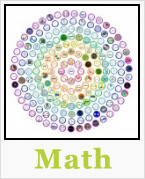



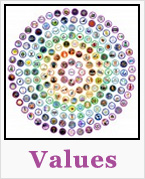
OPEN SOURCE CURRICULUM OUTLINES (click image for summaries and links to complete pages)
CARE
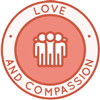
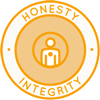
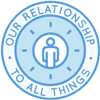
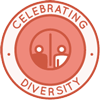
SHARE
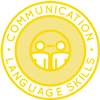
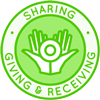
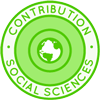
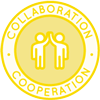
PLAY
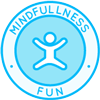
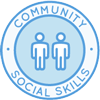
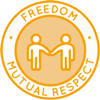
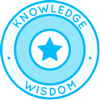
OPEN SOURCE TEACHING METHODOLOGY SUMMARIES
Montessori | Waldorf | Orff | Reggio | Multi-Intelligence | Bloom's Taxonomy | Study Tech | I-WE
INDEX OF ALL THE ONE COMMUNITY OPEN SOURCE LESSON PLANS

Click this image for the Lesson Plans for Life page with links to the rest of the lesson plans
THE WORLD'S LARGEST ONLINE FREE EDUCATION RESOURCE ARCHIVE
RELATED CONTENT AND OTHER RELATED RESOURCES
We're building this resource section. Click here if you have a suggestion or resource for this page.
18 AMAZING HUMAN BODY FACTS
MythBusters busted #18 on the list below.

Click Image to Visit AdvancedPhysicalMedicine.org (the source of this image)
OTHER RESOURCES
We're building a resource section. Click here if you have a suggestion or resource for this page.
OPEN SOURCE SUBJECT RESOURCES (click icons for complete pages)








OPEN SOURCE CURRICULUM OUTLINES (click image for summaries and links to complete pages)
CARE




SHARE




PLAY




OPEN SOURCE TEACHING METHODOLOGY SUMMARIES
Montessori | Waldorf | Orff | Reggio | Multi-Intelligence | Bloom's Taxonomy | Study Tech | I-WE
INDEX OF ALL THE ONE COMMUNITY OPEN SOURCE LESSON PLANS

Click this image for the Lesson Plans for Life page with links to the rest of the lesson plans
THE WORLD'S LARGEST ONLINE FREE EDUCATION RESOURCE ARCHIVE
RELATED CONTENT AND OTHER RELATED RESOURCES
We're building this resource section. Click here if you have a suggestion or resource for this page.






































 One Community
One Community




